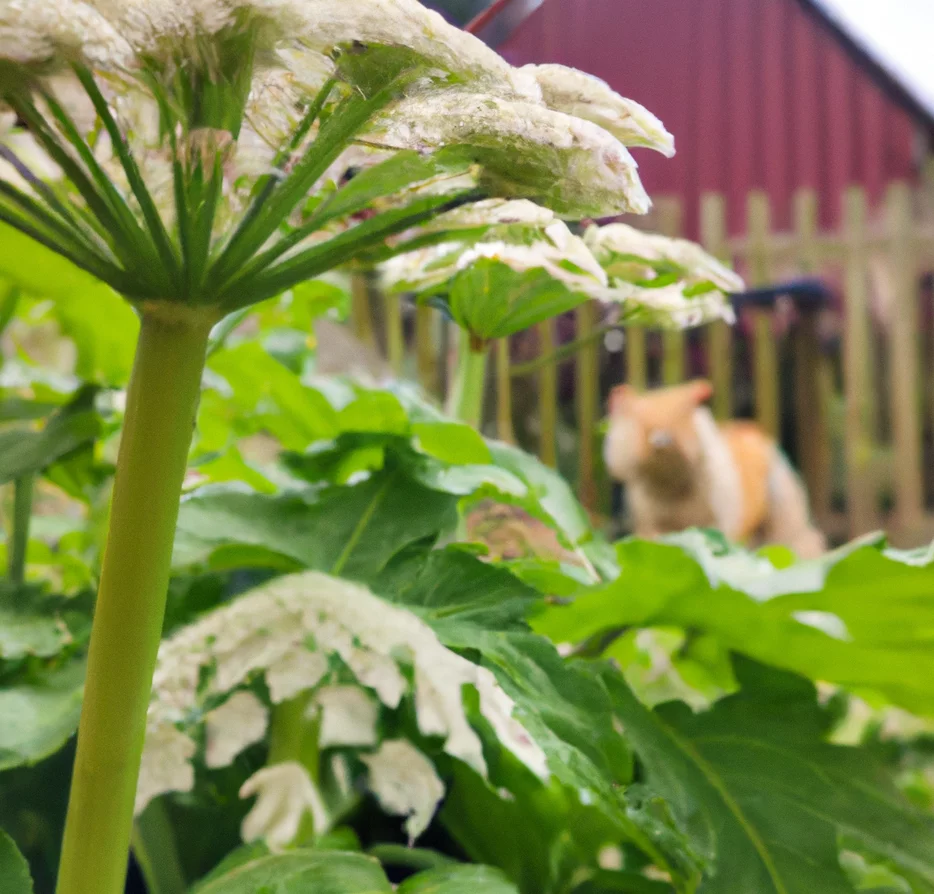The straightforward answer to the question is, yes, Cowbane, also known as Water Hemlock or Poison Parsnip, is toxic to cats.
This article has been meticulously crafted in collaboration with a team of experienced DVMs (doctors of veterinary medicine). With their insights, we strive to provide precise and current data regarding the potential dangers linked with various plants, Cowbane in this instance. Additionally, our findings are reinforced by thorough research from high-authority sources such as the ASPCA and PetMD.
Cowbane is a perennial herbaceous plant abundant in toxic compounds like cicutoxin and cicutol. When ingested by cats, these toxins can adversely affect brain neurons and lead to central nervous system malfunction. Symptoms in cats can include drooling, dilated pupils, difficulty in breathing, and pronounced weakness, especially after consuming parts of the cowbane plant. The roots contain the highest concentration of these harmful toxins.
Clinical Signs of Cowbane or Water Hemlock Poisoning in Cats

When a cat comes into contact with, smells, or ingests parts of the Cowbane or Water Hemlock plant, various symptoms can manifest due to the toxic compounds present in the plant. Here’s a detailed breakdown of each symptom and the reason behind its occurrence:
- Bloating: The toxic components in Cowbane can cause a build-up of gas in the cat’s digestive system, leading to noticeable bloating.
- Diarrhea: The gastrointestinal system reacts to the poisonous elements by trying to expel them, which often results in diarrhea.
- Dilated pupils: Cicutoxin and cicutol can adversely impact the cat’s nervous system, leading to dilation of the pupils.
- Vomiting: As a response to the ingested toxins, the cat’s body attempts to rid itself of the harmful substances, which can cause vomiting.
- Fever: The body’s immune response to the toxins can lead to an elevated temperature or fever.
- Seizures: The impact of the toxins on brain neurons can lead to uncontrolled electrical activity, resulting in seizures.
- Tremors: Another effect on the nervous system, the toxins can cause involuntary muscle movements or tremors.
- Pain in the abdomen: Inflammation or irritation of the stomach and intestines caused by the plant’s toxic components can result in abdominal pain.
- Cardiac dysrhythmias: The toxins can interfere with the heart’s electrical activity, causing irregular heartbeats.
- Renal Failure: Prolonged exposure or ingestion of large amounts can lead to kidney damage and, in severe cases, renal failure.
- Depression of the lungs: The toxins can affect the respiratory center in the brain, leading to difficulty in breathing or reduced lung function.
- Death: In extreme cases, if not treated promptly, the cumulative effects of these symptoms can unfortunately lead to the cat’s death.
It’s paramount to note that symptoms can manifest as quickly as five minutes post-ingestion, but for some cats, they may appear after an hour. As these symptoms can intensify over time, seeking immediate veterinary care is crucial.
First Aid and Treatment of Cowbane or Water Hemlock Poisoning in Cats

If your cat has not started vomiting yet, the veterinarian will start treating him by provoking vomit to get rid of any residual plant debris in his stomach. If your cat is vomiting and diarrhea is severe, he or she will require IV fluids to avoid dehydration and other complications.
To absorb any toxic leftover in your cat’s stomach, activated charcoal can be also used depending on your cat’s condition. If the situation calls, the veterinarian may also perform gastric lavage, which is a technique that will clean out your cat’s stomach.
To prevent your cat from suffering from respiratory depression as a result of the poisoning, the vet may need to insert an oxygen tube down his throat. If your cat is already having seizures, medication may be given to him. An IV can be used to administer benzodiazepines for this function.
Recovery from Cowbane or Water Hemlock Poisoning in Cats

Cats who haven’t had any seizures yet are more likely to recover than those who have had multiple seizures already. Consult your veterinarian to see if you need to switch to softer foods to avoid upsetting your cat’s sensitive stomach.
Your cat’s health may need to be monitored by the veterinarian after therapy. This is especially true if your cat was dehydrated or required the use of a respirator during treatment.
Prevention of Cowbane or Water Hemlock Poisoning in Cats
Cowbane or water hemlock is a wild plant, thus it’s very likely that your cat may come upon it outside. Restrict your cats’ access to the outdoors and keep them restricted inside your home to limit their risk of exposure.
If you love plants but have cats at home, check out these lists:





